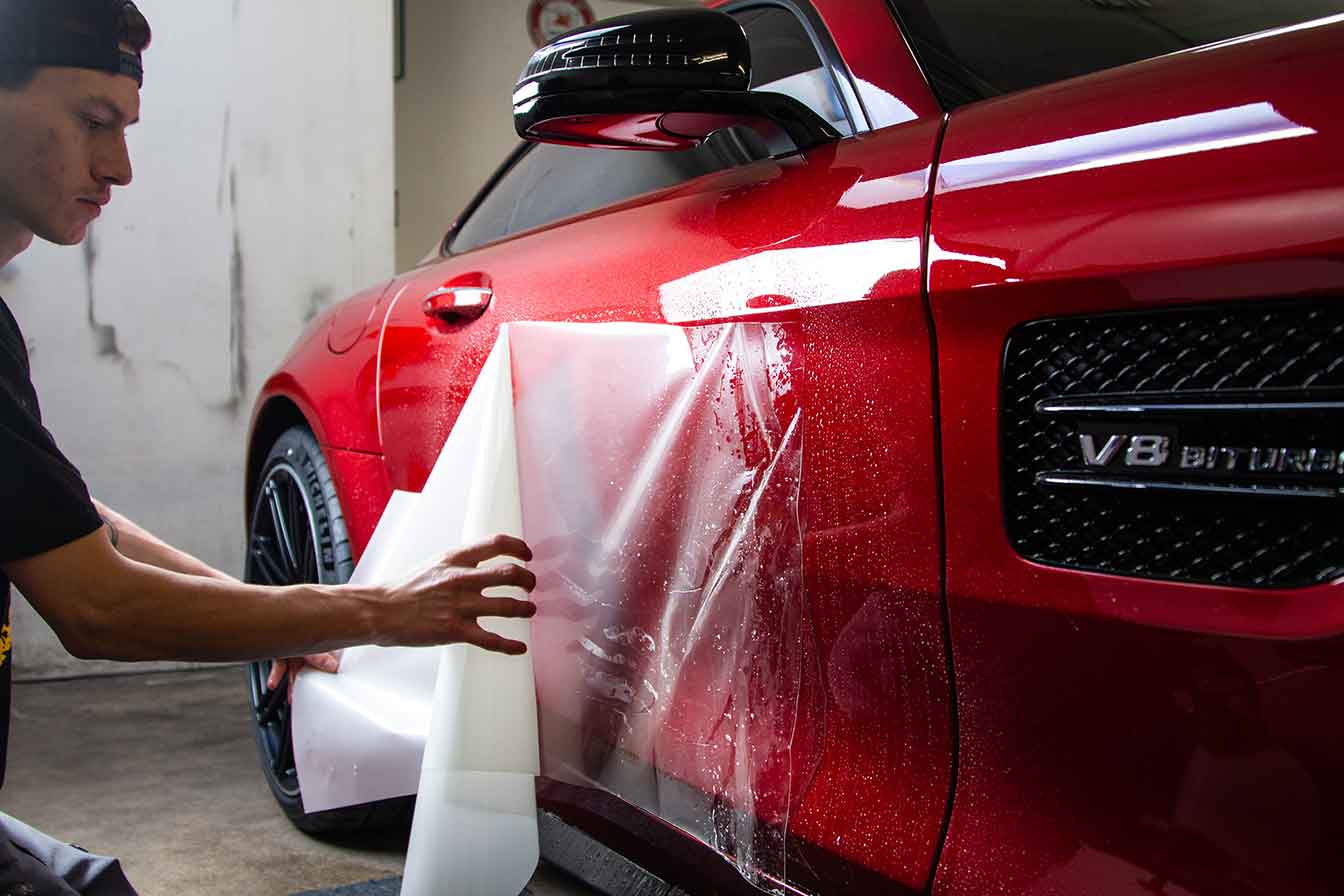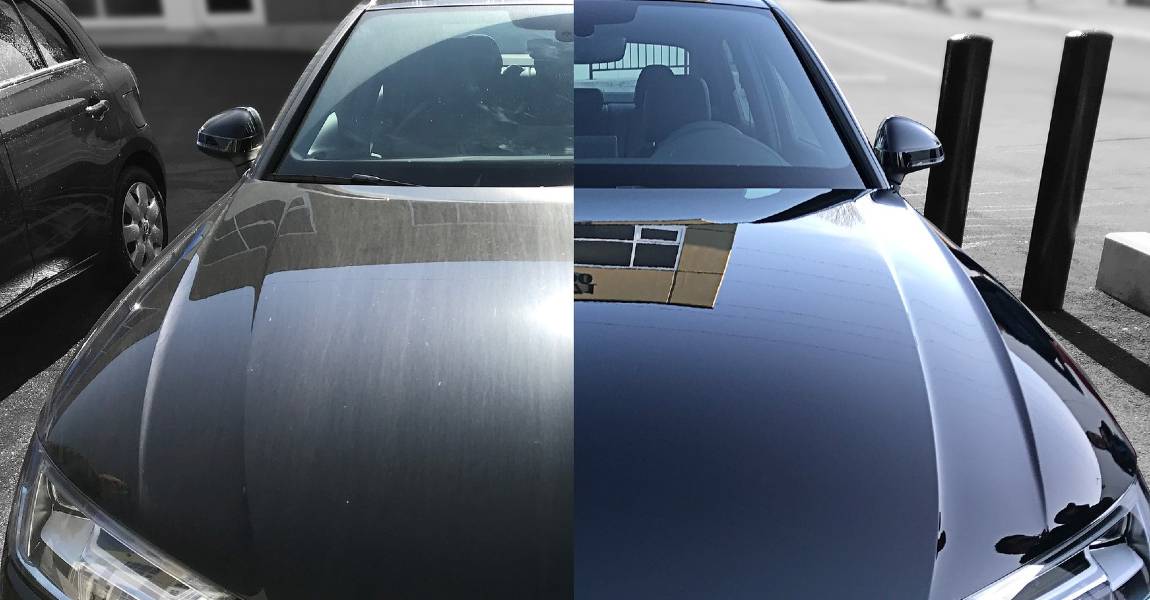Ceramic Layer vs. Typical Wax: Which Provides Better Long-Term Security?
The debate in between ceramic finishings and standard wax for automobile security has actually gathered substantial interest amongst auto lovers and professionals alike. Ceramic layers boast remarkable durability and resistance to ecological elements, yet the intricacy of their application increases inquiries about accessibility and usefulness.
Review of Ceramic Covering
Ceramic finishing has gained significant appeal among automotive fanatics and detailers alike due to its advanced protective high qualities. This ingenious technology is developed to develop a sturdy, hydrophobic shield over an automobile's paint surface, significantly improving its resistance to ecological contaminants such as dirt, UV rays, and chemical spots. Unlike standard wax, which provides a momentary layer of protection, ceramic coverings bond at a molecular degree with the paint, offering lasting toughness-- commonly extending beyond 2 years with proper maintenance.
The application process includes precise preparation of the automobile's surface, consisting of cleaning and polishing to make sure ideal adhesion. Once applied, the covering remedies to form a robust layer that not only includes depth and gloss to the paint yet also simplifies maintenance. With its hydrophobic homes, ceramic finishing allows water and dirt to move off even more quickly, decreasing the frequency of cleans and decreasing the threat of swirl marks.
In addition, ceramic layers are offered in various solutions, permitting customers to choose products tailored to their details demands and choices. On the whole, ceramic layer stands for a considerable development in paint protection modern technology, delivering remarkable performance compared to traditional alternatives.
Summary of Standard Wax
Generally concerned as a staple in auto care, wax works as a prominent choice for those looking for a simple approach to boost and protect their car's paint - ceramic coating. Automotive wax generally consists of all-natural active ingredients, such as carnauba, or synthetic compounds, designed to create a protective layer externally of the paint. This layer not just improves the automobile's gloss and beam but additionally supplies an obstacle versus ecological pollutants
The application of wax is usually user-friendly, making it available for both specialists and DIY lovers. When applied, wax needs a healing duration, after which it solidifies to develop a protective covering.
Nevertheless, while wax works for improving the visual charm of a car, it is necessary to note that the protection it supplies might necessitate much more frequent reapplication contrasted to alternative products, such as ceramic coverings. On the whole, standard wax remains a preferred alternative for those prioritizing ease of use and instant visual renovation.
Durability and Long Life Comparison
While both ceramic finishes and traditional wax deal protective advantages for automotive paint, their sturdiness and longevity differ significantly. Traditional wax, commonly made from natural carnauba or artificial polymers, typically offers a safety layer that lasts approximately three to six months. This relatively brief life-span necessitates routine reapplication to maintain optimal defense.
In comparison, ceramic layers are crafted from innovative nanotechnology, creating a covalent bond with the paint surface area. This results in a robust, hydrophobic layer that can sustain for two to five years, depending on the product and environmental conditions. The superior durability of ceramic finishings is credited to their chemical structure, which provides enhanced resistance to scrapes, UV rays, and oxidation.

Protection Against Ecological Elements
Protecting an automobile's paint from environmental aspects is vital for maintaining its appearance and value with time. Automobiles are frequently subjected to a selection of elements, consisting of UV rays, bird droppings, tree sap, acid rainfall, and roadway grime, all of which can endanger the honesty of the paintwork.
Ceramic coverings supply a robust defense versus these environmental aggressors. Unlike traditional wax, which can degrade promptly under UV exposure, ceramic layers create a long lasting, hydrophobic layer that stands up to the hazardous impacts of sunlight and ecological pollutants. This advanced innovation produces a chemical bond with the vehicle's surface, providing premium defense that lasts for several years, even in severe problems.
In comparison, ceramic finishings keep their protective qualities much longer, substantially reducing the threat of paint damage and making certain that the lorry retains its visual charm. As a result, ceramic layers are increasingly identified as the exceptional choice for long-term protection versus environmental variables.
Application and Maintenance Differences
The approaches of application and succeeding upkeep for ceramic coverings and standard wax differ dramatically, impacting the general customer experience and performance of each product. Ceramic finishes call for an even more intricate application procedure, normally entailing surface area preparation that consists of cleaning, sanitizing, and brightening the car. Once the surface is prepared, the ceramic coating is used in a controlled atmosphere, commonly needing expert expertise to ensure correct curing and bonding to the paint.

While both products boost lorry appearance, the longer-lasting security provided by ceramic coatings might justify their preliminary financial investment, despite the even more demanding application process. On the other hand, conventional wax stays a prominent selection for those seeking a simpler, albeit short-term, option.

Final Thought
In final thought, ceramic layers show substantial advantages over standard wax in terms of toughness and environmental management. With a life expectancy prolonging two to 5 years and remarkable resistance to UV rays, dust, and chemical spots, ceramic finishings use a much more efficient service for long-term vehicle upkeep. Although the application process might call for expert proficiency, the resulting expense savings and reduced regularity of reapplication highlight the value of ceramic layers for those looking for ideal go to this site vehicle security.
The argument in between ceramic finishings and standard wax for automobile protection has actually garnered considerable attention amongst automobile fanatics and experts alike. Unlike typical wax, which supplies a short-term layer of defense, ceramic finishes bond at a molecular degree with the paint, using long-lasting toughness-- frequently extending past two years with appropriate upkeep.
While both ceramic coverings and typical wax offer protective benefits for vehicle paint, their longevity and long life vary considerably. For auto lovers seeking long-lasting security, visit our website ceramic finishes offer an engaging benefit over standard wax items.
In conclusion, ceramic coatings demonstrate considerable benefits over typical wax in terms of toughness and environmental protection.
Comments on “Ceramic Coating: The Future of Automotive Surface Protection”